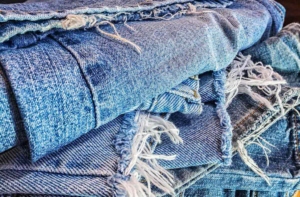Fall Waste Audit: How Your Business Can Benefit from Sustainable Junk Removal
With business kicking into high gear ahead of the holiday season, fall is an ideal time to reevaluate your waste management systems. Why not start with a fall waste audit? This will help you identify areas for improvement and leverage services like sustainable junk removal to drive cost savings and improve your ESG efforts.
A well-executed waste audit can help you identify the types of waste your business generates, pinpoint opportunities for recycling and junk removal, and uncover potential savings. Plus, adopting sustainable practices in your junk removal process can elevate your brand’s image as a responsible corporate citizen.
So, whether you’re looking to slash overhead costs or make strides in your sustainability goals, keep reading. In this article, we’ll guide you through the ins and outs of leveraging sustainable junk removal to benefit your business.
The Rising Concern of Business Waste
The issue of business waste is escalating, with significant financial and environmental repercussions if it isn’t managed effectively. For companies, the concerns include:
- Financial Impact. Poor waste management can lead to substantial costs. Disposing of waste in an unorganized manner often incurs fines and long-term costs, including steep landfill disposal fees.
- Reputational Impact. With high consumer expectations around environmentally conscious business behavior, a lack of commitment to sustainability can negatively impact a business’s reputation and potentially lead you to lose customers.
- Environmental Impact. Between 2023 and 2050, global municipal solid waste generation is expected to increase by 70% to 3.4 billion metric tons, with less than 20% of generated waste currently being recycled. The business sector’s contributions to these metrics are significant, with a disregard for effective waste management exacerbating environmental issues including air and ground pollution and greenhouse gas emissions.
These impacts underscore the need for businesses to invest in sustainable waste management practices. And it all starts with a waste audit.
What Is a Waste Audit and Why Conduct One This Fall?
A waste audit, or waste assessment, is a systematic process of assessing waste generation, management, and disposal within an organization. The aim is to identify the types and quantities of waste produced and how that waste is handled, giving you concrete insights into potential areas for reduction and improvement in waste management practices. An audit serves as an essential first step for organizations aiming to minimize waste and enhance their sustainability efforts.
Fall presents a strategic opportunity for businesses to conduct waste audits for multiple reasons:
- Seasonal Changes. Fall marks the end of the summer season, during which there are high consumption levels due to vacations and tourism. Conducting an audit at this time can help provide an accurate reflection of waste generated during peak times.
- Business Cycles. Many industries experience a slowdown in quarter 4 at the end of the year, which offers a convenient window to focus on sustainability initiatives.
- Annual Budget Planning. As your business finalizes budgets for the next fiscal year, waste audit findings can help inform resource allocation, potentially earmarking funds for sustainable junk management, recycling, or waste reduction programs.
By leveraging the seasonal changes, business cycles, and annual budget planning that fall offers, you can obtain valuable insights to improve sustainability, cut costs, and enhance operational efficiencies ahead of the next fiscal year.
3 Steps for Conducting a Fall Waste Audit
Whether you plan to conduct a fall waste audit internally or with the help of a sustainability vendor like CheckSammy, it generally involves a 3-step process.
Step 1: Planning
The planning process involves getting a clear initial picture of what you’re dealing with in order to determine which areas to audit. Start by:
- Assembling a Team. A diverse team with representatives across different divisions ensures a comprehensive audit. By including members from different departments, you’ll be more likely to gain varied insights.
- Preliminary Assessment. Understand the types of waste generated and potential areas for audit.
- Defining Objectives. Clearly outline the goals of the audit, whether it’s reducing waste, cutting costs, or improving recycling efforts.
Step 2: Execution
The on-the-ground audit involves collecting data based on physical waste on site at your facilities:
- Sorting. Collect waste from various departments and sort them into categories like paper, plastic, organic waste, and electronic waste.
- Weighing. Each category of waste should be weighed to determine the volume of waste produced.
- Categorizing. Further classify waste into sub-categories like recyclable, non-recyclable, and hazardous.
Step 3: Analysis
This is where the insights will be gleaned to help inform your sustainability decisions.
- Data Interpretation. Use the data to identify high waste-producing areas and processes.
- Next Steps. Develop strategies for waste reduction, which could include recycling programs, sustainable junk removal initiatives, or adjustments to purchasing practices. This analysis can also inform next year’s budget planning.
Planning and executing a well-thought-out waste audit in the fall can lead to actionable insights, helping you align your business practices with both financial and environmental goals.
Incorporate Sustainable Junk Removal Into Your Business Practices
Once you’ve identified areas for improvement, you may determine that it’s time to develop a more comprehensive sustainable recycling and junk removal program at your organization. Ongoing junk removal that diverts recyclable items away from the landfill can help cut costs and increase business efficiencies. CheckSammy can help, contact us today to learn more.
See Our Services
Create a custom solution to meet your waste and sustainability goals. Contact us today!
Continue reading
Dive deeper into the CheckSammy Blog by reading one of our posts below
Feeling the Pain of Higher Resident Turnover? Apartment Junk Removal Can Help
If you’re a property manager, you’ve probably had a significant increase in tenant turnover over the last couple of years. So it’s no wonder apartment junk removal may be top of mind for you right now. There are several reasons for this shift. For one, the housing market is on fire right now. In 2020 […]
Read More About Feeling the Pain of Higher Resident Turnover? Apartment Junk Removal Can HelpSetting Up a Community E-waste Recycling Program
E-waste is the fastest-growing municipal waste stream according to the EPA, yet e-waste recycling isn’t keeping pace. In fact, only 12.5% of all e-waste is recycled, reports the EPA. Starting a community e-waste recycling program is a terrific way to ensure hazardous e-waste, like lithium-ion batteries, doesn’t end up in your community’s landfill. Creating an […]
Read More About Setting Up a Community E-waste Recycling ProgramWaste Management’s Role in the Circular Economy
Establishing a waste management program for your business or community is one of the best ways you can contribute to the circular economy. Here’s everything you need to know about waste management’s role in the circular economy (and how to get involved). What Is the Circular Economy? Our current economic model is all about taking […]
Read More About Waste Management’s Role in the Circular Economy5 Reasons to Consider a Textile Recycling Program for Your Organization
Americans sent more than 17 million tons of textiles to landfills in 2018, a volume that is only increasing every year, reports the Environmental Protection Agency. When you think about the fact that it can take over 200 years for textiles to decompose, it’s easy to grasp how large textile waste’s contribution is to the […]
Read More About 5 Reasons to Consider a Textile Recycling Program for Your Organization8 Benefits of Environmentally Friendly Power Washing Services
If you’re into maintaining the curb appeal of your business or home, then you’ve probably heard of pressure washing. Pressure cleaning involves using high-pressure water spray to remove grime, mold, dust, paint, mud, and other junk from objects or surfaces. Many people worry that pressure washing isn’t good for the environment, but this couldn’t be […]
Read More About 8 Benefits of Environmentally Friendly Power Washing ServicesWhy Our Customers Love Our Full-Service Junk Removal
If you’re looking for full-service junk removal services, you’ve come to the right place. CheckSammy is a one-stop shop for all your junk removal and sustainability needs. From our affordability, simplicity, and unrivaled turnaround times to our innovative sustainability solutions and patented technology and data, it’s clear why some of North America’s biggest companies choose […]
Read More About Why Our Customers Love Our Full-Service Junk RemovalTips for a Stress-Free Move From An Eco-Friendly Junk Removal Company
What does an eco-friendly junk removal company know about moving? Quite a lot, actually. Moving can be an especially chaotic time. You have to pack everything up, get rid of unwanted items, clean your property, load everything up, and move your things to your new location. That doesn’t even include the unpacking and resettling period. […]
Read More About Tips for a Stress-Free Move From An Eco-Friendly Junk Removal CompanyCollege Junk Removal Tips for Student Move-In Day
As the new school year gears up, colleges across the country are looking for ways to clean up their campuses before the new year begins, and many of them want to do so sustainably. College junk removal isn’t easy, though, especially around move-in week—and when trying to do so sustainably. As students move in and […]
Read More About College Junk Removal Tips for Student Move-In Day8 Items Hospitality Businesses May Not Know They Can Recycle
One hotel guest produces 2.5 pounds of trash every single day. Just a single hotel room produces around one cubic yard of waste each month, which totals 200 gallons of waste per room every month. Most of this waste goes straight to the landfill, even though research shows that up to 60% of it is […]
Read More About 8 Items Hospitality Businesses May Not Know They Can Recycle












